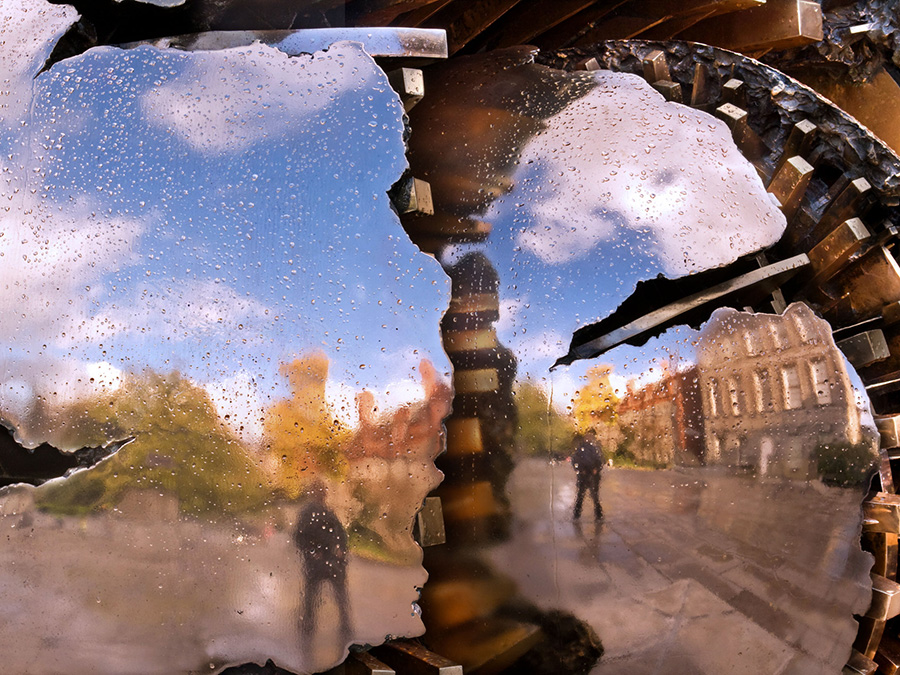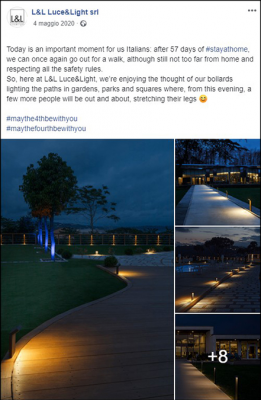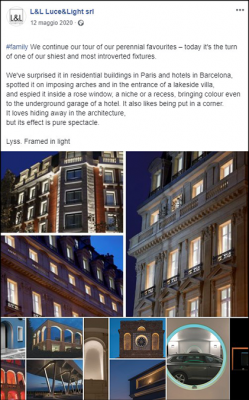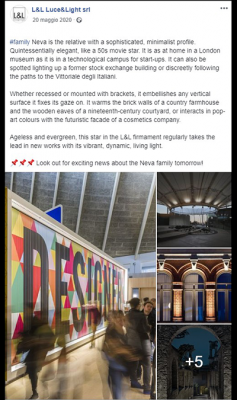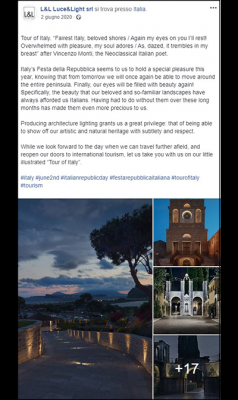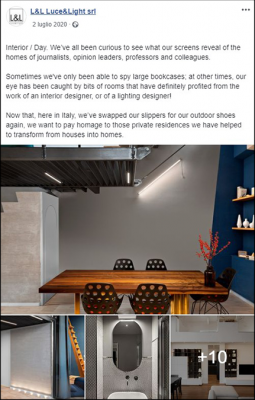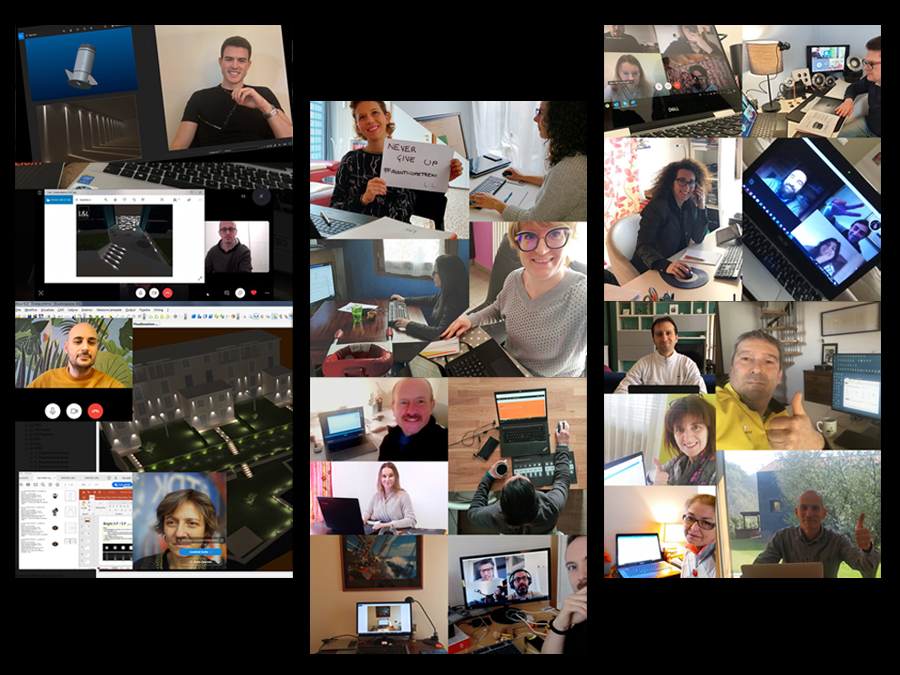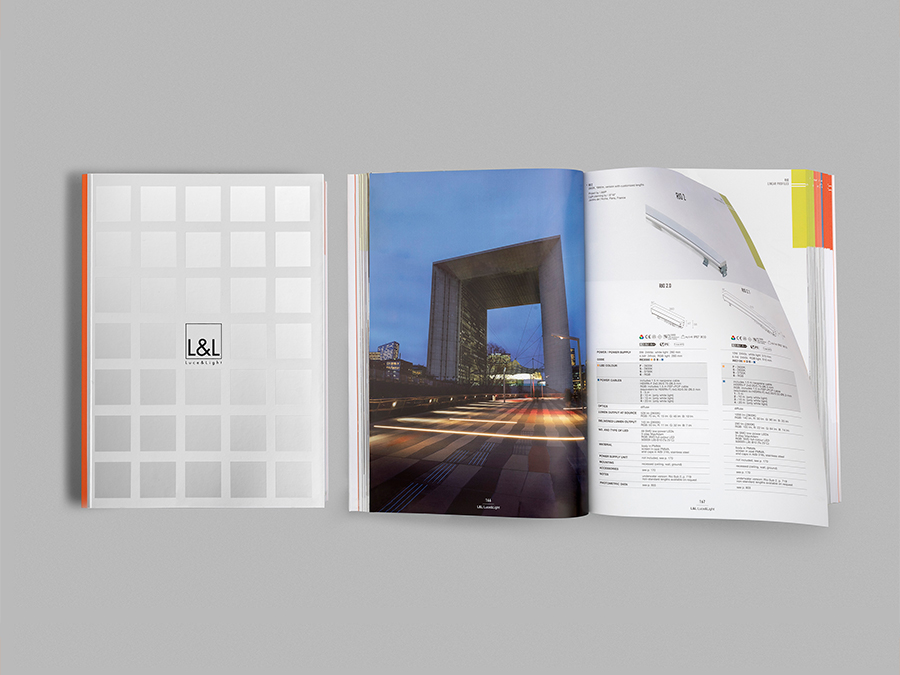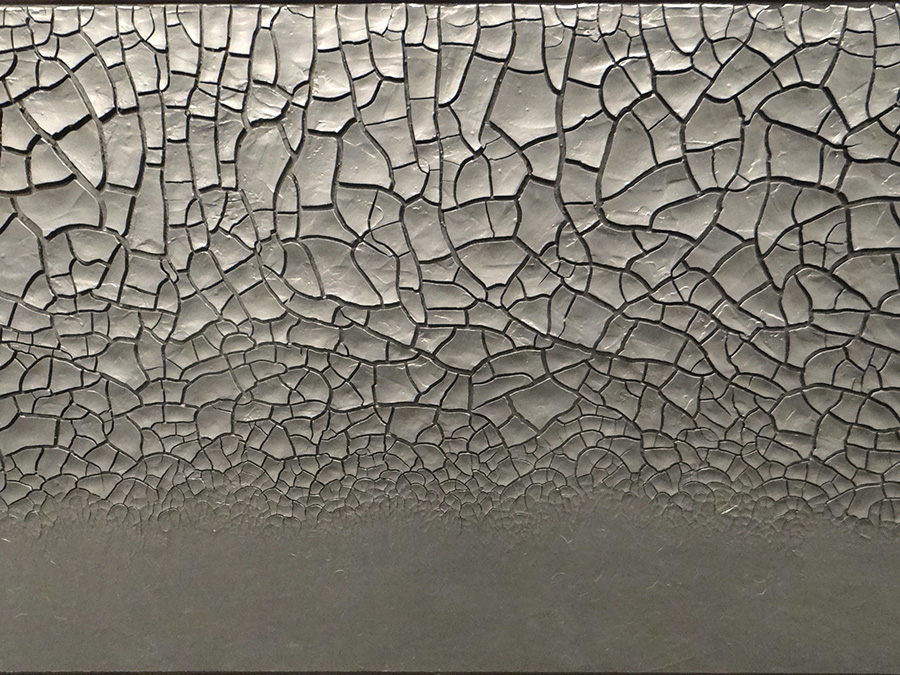Exactly a year after the start of the events that turned our daily lives upside down, here are four more interviews with members of the L&L team gathered during that time.
That’s how the light gets in.
(Leonard Cohen)
We peeked through the cracks of this historical break and caught the light filtering through them. As a result, we interviewed some members of the L&L team.
Alberto Danese, Lighting Consultant
Your job has one of the largest proportions of online activity in the company: would it be right to assume that your work wasn’t particularly affected by the pandemic?
When I had to go into my own personal lockdown for the second time, seeing as the virus paid us a home visit, I dusted off my home workstation. A large monitor and a remote connection to the company’s computer system enabled me to be fully operational, while digital communication tools (particularly WhatsApp and Skype) kept me in touch with office colleagues and partners in the field alike.
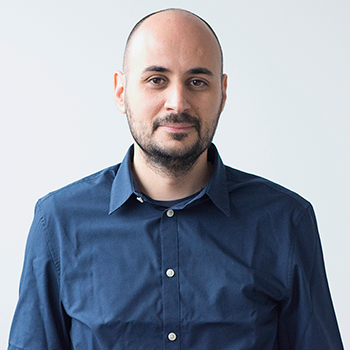
Speed of response is a priority, and I shudder at the thought of a total downtime of ten days, or even longer.
My role in the company is to provide lighting support to designers who choose L&L for their projects, so I frequently consult our website and use it to share information and technical documentation with my contacts.
Not too long ago, I would have had to get the catalogue sent to me at home!
Can you tell us a good habit that you started in lockdown and you’ll now carry on?
Giving colleagues a call out of hours. We all get on very well in the office, so this enforced separation has produced a natural desire to chat. A simple “Hello, how are you?” would be followed by conversations that ranged from sharing recipes for dinner to work discussions – after all, we share the same passion, and we enjoy what we do.
Is there any particular aspect of your work you'd like to talk about?
I receive a lot of photographic documentation supporting the requests for advice – I like travelling, but I’m also a bit apprehensive about going off adventuring. Thanks to these photos, I get to see the sights, from historic buildings and churches to parks and shops, all over the world. And I often receive pictures of the completed projects, too.
It's always satisfying to see our products at work – the recessed luminaires, projectors and wall lights that come out of our factory and that I have sometimes personally inspected before they were shipped.
Lucia Capparotto, Assembly
Since March 2020, there have been several states of emergency in Italy. How has your working day changed in recent months?
At my personal workstation in the assembly department, I already worked at some distance from my colleagues, so I haven’t felt much change due to the anti-Covid rules.
However, I have experienced a new feeling: when we started up again, there were only a few of us working in the production department and I immediately felt I’d been taken back thirteen years, to when L&L had just been created, and there was a very small team of us. When there are only a few of us, there are inevitably more opportunities to compare notes and get to know each other.
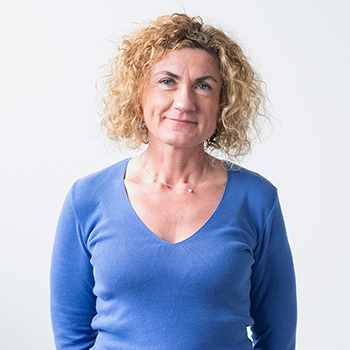
So these events have given you food for thought concerning your work?
Yes, I was saying before that working in a small team encourages you to communicate more and discuss not just work issues but also the processes that lead to certain choices. More than ever before, I’ve found myself thinking about ways to recreate this strong synergy in larger teams.
Is there some particularly invasive protocol you can’t wait to be rid of when this is over? Or a work habit you’ve had to stop to comply with protocols?
For me, physical contact is very important. I find a touch can be full of humanity and sometimes say more than a thousand words. Not being able to interact like that, in both my personal and working life, is a major obstacle for me. I can’t wait to be able to hug a colleague on their birthday again, or put my arm around them in one of life’s sad moments. And, of course, I can’t wait to stop wearing a face covering!
A question we’re asking everyone: can you tell us a good habit that you started in lockdown and you’ll now carry on?
I’m exercising a lot more than I used to. I never fail to take my evening walk any more, I need to have a break and recharge mentally and physically. And I’ve rediscovered my passion for gardening as well as the ability to take more time for myself.
Monica D’Emidio, Communications Manager
Anyone preparing for an event in 2020, before the global health emergency arose, felt disappointed and helpless in the face of the cancellations that followed. Can you tell us how this was reflected in the company’s corporate communications?
At the start of March, I saw the editorial plan for our participation in the Light+Building trade fair (which was first postponed and then cancelled) as a closed drawer that could never be reopened. I’d been working on it for eight months, it was planned down to the smallest detail, it couldn’t all just disappear. Yes, it could though, and with no time to “mourn its passing”, because we had to renegotiate agreements with everyone, move the campaigns that had already been scheduled, and save what we could. Once we’d got through this first phase, it took me a while to get my energy back.
Our first “communication reaction” was focused on reconstructing a sense of community, as a response to social distancing. It was just a small gesture, inspired by a brilliant initiative by APIL (Associazione Professionisti dell'Illuminazione) that we’d decided to embrace and pass on: #dontstopthelight. It was what we needed, an excuse to feel close to each other as colleagues, to feel close to the people we work with, lighting professionals, and to let our more distant customers know that we were all fine and that the light hadn’t gone out, it was shining from the windows of our homes.
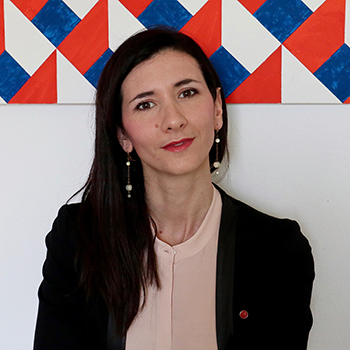
I still get emotional now when I think back to the moment I collected together all the photos I’d received from our colleagues and flicked through them.
And that's nothing compared to the sense of belonging I felt when I clicked on the hashtag and saw the vibrant energy of so many other people around the world who, like us, are passionate about light.
That was the moment I picked myself up again. The power of a community.
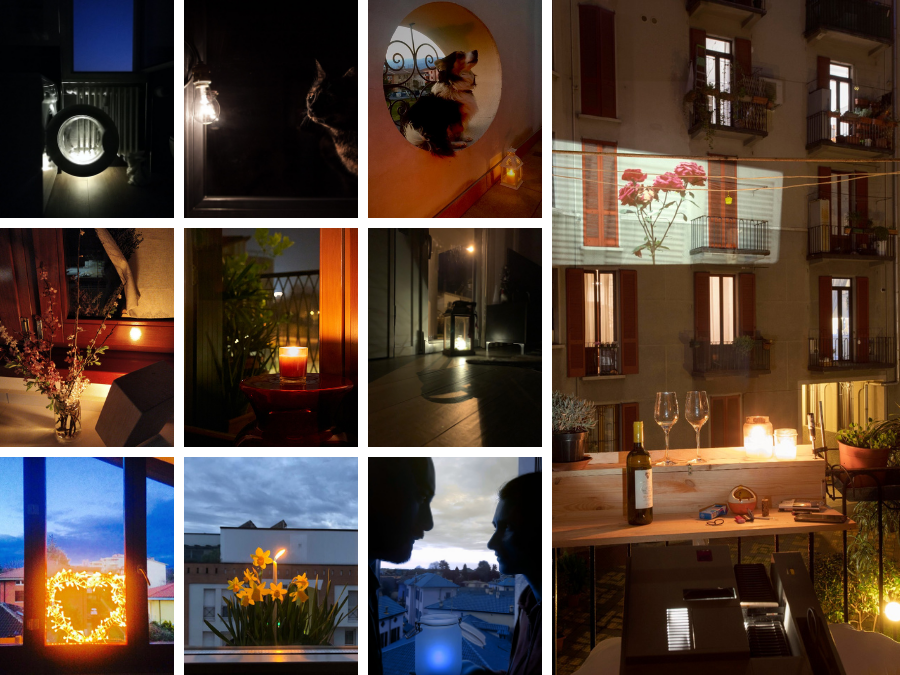
#dontstopthelight
Speaking of community, what impact did all this have on your social media communication?
In a word: empathy. That message had taken me to another level, that of the here and now, far away from any editorial plan now consigned to the wastebin. I started to think in terms of real time marketing: more than anyone, I felt the need to create content that our contacts could identify with in the current reality. Everything I was normally used to communicating was suddenly irrelevant: new products, new projects and (just imagine!) events. I thought I would start using a more direct tone, strike a different chord.
Italians can go out for a walk again after 57 days? “We’re enjoying imagining our bollards lighting the paths in gardens, parks and squares where, from this evening, a few more people than yesterday will be out and about, stretching their legs.”
The Italian government says we can visit relatives? We imagined a brief round of visits to our most well-known products as if they were actual family members, and we sketched out their personalities.
And so on: we took inspiration from each new occurrence, from the Festa della Repubblica to school-leaving exams, posting on Facebook and Instagram our illustrated journeys, made up not only of projects and products but also, and above all, of rediscovered sensations.
What was the biggest difficulty?
Every company, of every size and in every sector, found themselves with the same urgent need to share the same messages: we’ll get through this; we’re all in this together; we’ve reopened with restrictions; thank you to the key workers who continued to go into work every day; thank you to all of you; the new normality; we’re all starting again together, etc.
It was difficult not to bow to the pressures of the emergency and to find our own way, as free of clichés as possible and made of the matter that belongs to us, light.
Can you tell us a good habit that you started in lockdown and you’ll now carry on?
To answer this one, I’m going to embrace cliché with both arms :)
In the middle of every difficulty lies opportunity: nothing could be more true. I’ve resumed my professional training, and I’m pursuing a master’s degree in social media marketing. I couldn’t have made a better choice for myself – studying has completely recharged my batteries: I’m never going to stop doing it again.
Francesco Sattin, Purchasing Manager
Being responsible for purchasing, you will have had many opportunities to discuss with your contacts how the pandemic has affected the timing of the supply of raw materials and components. How have you managed to cope with this variable in your work?
What happened last year is, unfortunately, still very relevant today. As our sector is tightly linked to the electronics industry, we began to realise that there were problems in East Asian countries, where the multinationals in the sector produce all their components, when we got the first reports of difficulties and delays in delivery dates that had already been confirmed.
These reports allowed us to understand immediately how serious the problem was and, thanks to our company’s financial soundness, we were able to prepare for the long-term repercussions heading for Italy by building up a warehouse buffer. This allowed us to face the critical period having already managed a series of problems upstream.
That’s not to say there weren’t any hitches but, by taking these precautions, we were able to smooth them out considerably and avoid passing them on to our customers.
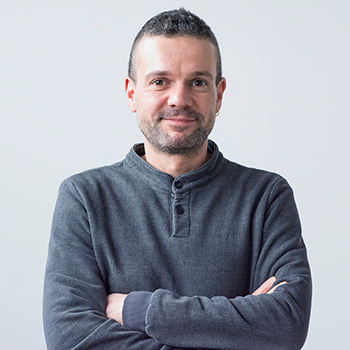
How much did the local/regional supply chain influence the supply of material to the warehouse for production?
Enormously. Having European suppliers, most of whom are Italian and geographically very close to us, allowed us to avoid various logistical problems, not least because we all faced the peak of the crisis more or less at the same time – we didn’t find ourselves shutting down at different times, which would have caused hiccups in the supply chain.
Right from the start of the global health emergency, we fully took on board all the habits and devices necessary to avoid any transmission, and then, once the government declared a lockdown, we started to partially work from home. The production team was physically on site in the company to assemble and ship, while all the sales, technical, marketing and procurement work was carried out by people working remotely.
Bit by bit, our suppliers returned to work as part of the permitted supply chain. Some only reopened in May, however. We were able to cover a month and a half of production thanks to our warehouse and organisation – and also thanks to the flexibility of our supply chain. I still remember, in particular, the difficulty and fear felt by suppliers in the Lombardy area, some of whom were also personally affected by Covid events, once the virus arrived in Italy.
During the phone calls I made in the absolute silence of those days of working from home, rather than in the busy, buzzing work environment I usually find myself in, I could sense great despondency at the situation but also a willingness to tackle problems together. It was a very formative time.
A question we’re asking everyone: can you tell us a good habit that you started in the first lockdown and you’ll now carry on?
In lockdown, like most of Italy, I learnt to make pizza at home. I read a lot, enjoyed a lot of family time, and, amazingly, even watched a few films. And I also finished writing a book, published by Echos Edizioni and available from the major online retailers.
🔔 🔔 🔔
Further insightful interviews with the L&L team ...
On the cover: Arnaldo Pomodoro, Sfera con Sfera, 1963. Photo: Peter Brown (CC by 2.0)

